Welcome back – to my second post! It is my intention to, eventually, write a daily post. Well … maybe five per week, any way. It has already proven more difficult than I imagined: sourcing and researching material; uploading and downloading images; and organizing categories and writing content that will result in an informative, creative, and attractive post. Fortunately, I’m quite organized, possess a plethora of design-related material – both hard copies and digitally, and, most importantly, am passionate about and dedicated to the best in interior design and decoration.
In my inaugural post I introduced you to the rooms of two residences that have had a profound impact on the development of my own aesthetic: the Paris salon of the Vicomtesse and Vicomte de Noailles in the Hôtel Bischoffsheim, decorated by Jean-Michel Frank circa 1926; and, the apartment of the late artist Cy Twombly situated within a converted palazzo in Rome. While the images of both residences convey a spare elegance, albeit dissimilar, my focus in this post is on the work of Jean-Michel Frank, who has over the decades informed and inspired countless interior designers and decorators.
Interior design buffs and aficionados may have already sensed familiarity with the title for this post: Perfectly Frank. Filed away, in one of my many binders, I found an article written by Stephen Calloway some time during the 1980’s for House and Garden magazine, titled “Perfectly Frank”. It reveals the human side of the designer, and that of his most influential client, the Vicomtess and Vicomte de Noailles.
The de Noailles’ eighteenth-century Beaux-Arts Paris townhouse, the Hôtel Bischoffsheim on the place des Unis (now the Musée Baccarat), was inherited from Marie-Laure’s grandfather. While some of the rooms were eighteenth-century with boiseries the elegantly cool rooms Frank would design for them would become the most important of his career.
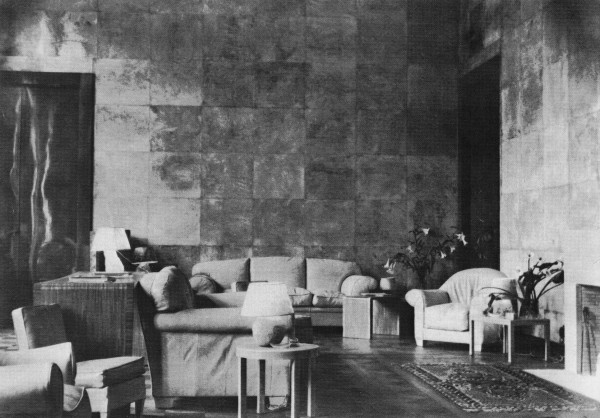
The main salon of the de Noailles’ Paris hôtel particulier when first installed by Frank. Photographed by Man Ray in 1929.
Frank’s classic-modern rooms for the de Noailles’ exude understated luxury, where meticulous craftsmanship and exotic materials merge with exquisite restraint. Soaring vellum-sheathed walls and monumental bronze doors envelop oversize furniture covered in creamy white leather that mixes with low tables covered in leather, lacquer and hammered shagreen.
The de Noailles were avid art collectors and considered among the haut monde of modern Paris. Jean-Michel Frank provided the artistic background and vision a patron of the arts such as Marie-Laure de Noailles expected. By 1932 Frank had a shop at 140 rue du Faubourg Saint-Honoré, near the salon of his new friend, Coco Chanel, with a coterie of illustrious designers and artisans – the decorator Adolphe Chanaux, painter Christian Bérard , architect Emilio Terry, sculptor Alberto Giacometti, and his brother, Diego, the designer – all of whom made significant contributions to the evolving Jean-Michel Frank style.
The Vicomte and Vicomtesse de Noailles represented at the highest level this close association between patrons of strong personal taste and talented designers, the productive link that made Paris unique in the thirties. – Van Day Truex
As hostess, patron of the arts, sometimes muse, and artist herself, Marie-Laure de Noailles became known for her inimitable style and taste. Frank’s elegantly spare rooms would give way to walls hung with Modernist paintings suspended by gilt chain or thick rope – salon-style, collections and bibelots of all matter, stacked books and magazines, framed photos, and an English-style fireplace fender bench.
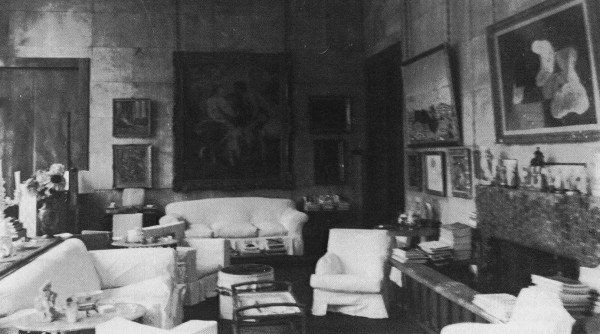
The main salon after Marie-Laure de Noailles added paintings and personal bibelots. Photograph by Cecil Beaton, circa late 1938.
Frank subscribed to the dictum “you can most luxuriously install a room by un-furnishing it”. Marie-Laure de Noailles didn’t quite share this directive, turning their Beaux-Arts townhouse, with its luxurious modern rooms designed by Frank, into a laboratory of personal caprices, where the de Noailles held court with the Parisian avant-garde, centered around writer and film-maker Jean Cocteau and designer and painter Christain Bérard.
By circa 1938, when Cecil Beaton photographed Vicomtesse de Noailles in her salon with novelist Philip Toynbee and cellist Maurice Gendron, she and the Vicomte had emblellished Frank’s chaste design with antiques and avant-garde paintings. Above the mantel is a Balthus; at right a Bérard is suspended from gilt chains.

At her desk in her townhouse, Hotel Bisschofsheim in Paris, chairs, a desk and parchment tile wall covering reveal the hand of Jean-Michel Frank.
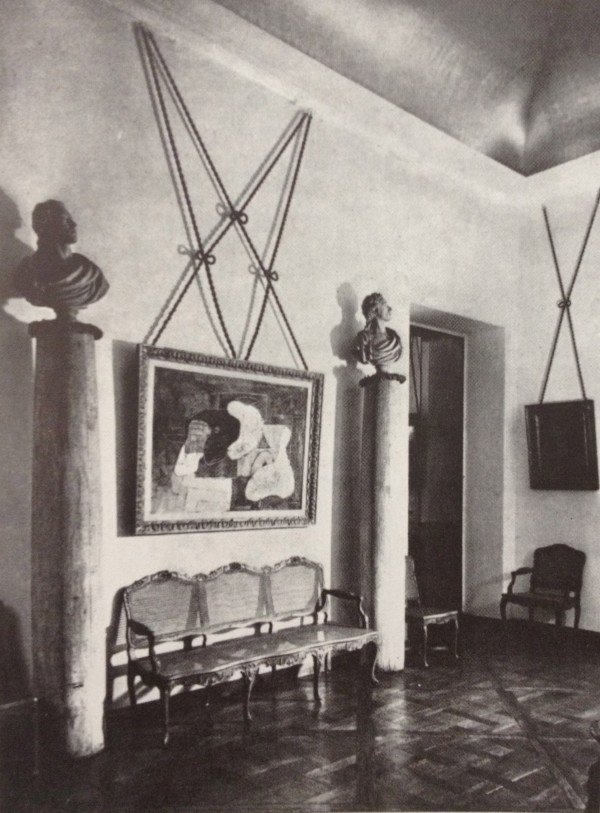
Old and new are mixed in the hall of the de Noailles Paris townhouse, Hotel Bischoffsheim. Photograph courtesy of Twentieth Century Decoration by Stephen Calloway, 1988. Originally featured in House and Garden, June, 1952.
While Frank was generally known to be testy by nature it has been questioned whether he reacted against the embellishments of his design made by the de Noailles, as some stories suggest. For myself, these rooms are awe-inspiring in either le style Frank or le style de Noailles. Frank’s vision speaks to the restrained classicist in me, while the salon de Noailles speaks to the artist in me. Either way, Frank’s scheme of extreme elegance and cool simplicity, employing unusual and precious materials, and the de Noailles intimate and eclectic salon des artistes, represents the rarefied passions of two exceptional visionaries.











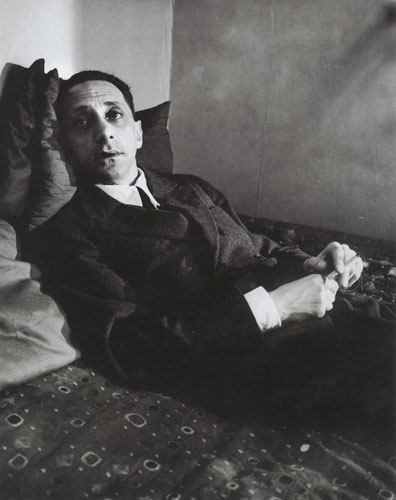
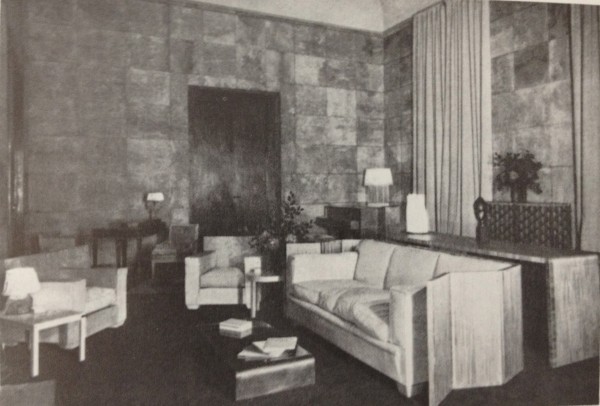
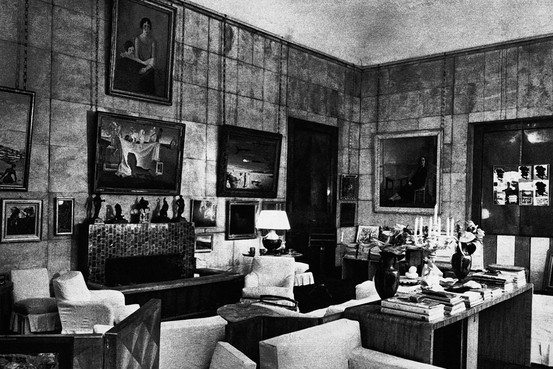
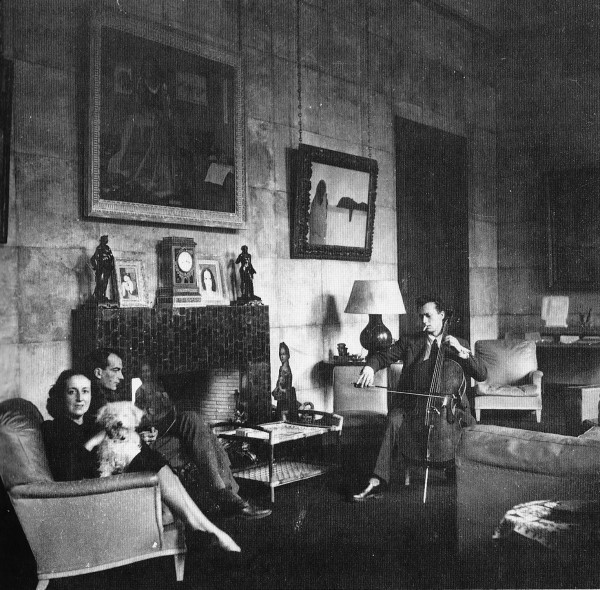



Cris… Another great read… and such history and detail… on designers… that other design blogs leave out whether intentional or not.
I found art work hung from chains… rather interesting… and why not… designing is about creative imagination… and personal expression… and stepping out of rigid boxes and points of view.
Thank you for your insight and expert knowledge of design history and flair.
Victoria Silva